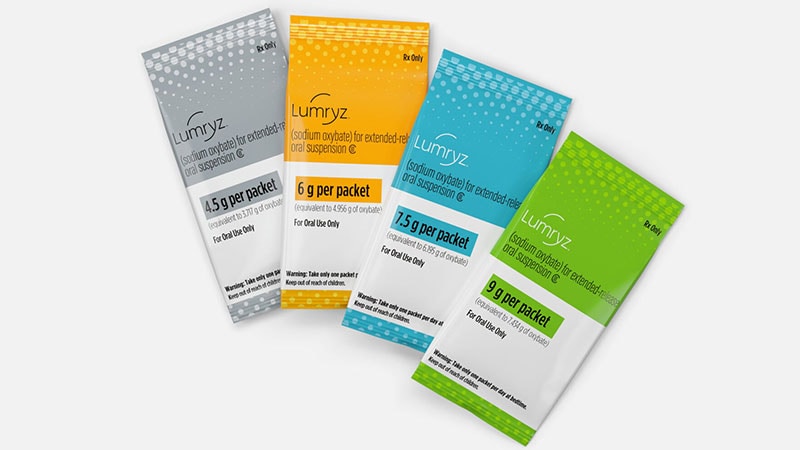The US Food and Drug Administration (FDA) has approved an extended-release formulation of sodium oxybate (Lumryz, Avadel Pharmaceuticals) to be taken once at bedtime for the treatment of cataplexy or excessive daytime sleepiness (EDS) in adults aged 18 years or older with narcolepsy.
Sodium oxybate was first approved by the FDA in 2002 to treat cataplexy in adults with narcolepsy and was expanded in 2005 to also treat EDS. That formulation is indicated for twice-nightly administration, with the second dose taken 2.5-4 hours after the first.
Lumryz is the first and only FDA-approved once-at-bedtime sodium oxybate therapy for people with narcolepsy.
The approval is based on data from the phase 3 REST-ON study.
As reported previously by Medscape Medical News, compared with placebo, extended-release sodium oxybate demonstrated statistically significant (P < .001) and clinically meaningful improvement at all three doses assessed (6 g, 7.5 g, and 9 g) across all three coprimary endpoints: Maintenance of Wakefulness Test, Clinical Global Impression-Improvement, and mean weekly attacks of cataplexy.
“This long-awaited therapy for people living with narcolepsy fills a critical unmet need by avoiding the burden of a second middle-of-the-night dose that immediate-release oxybate products require,” principal investigator Michael J. Thorpy, MD, director at the Sleep-Wake Disorders Center at Montefiore Medical Center, New York City, said in a news release.
“The once-at-bedtime dosing regimen of Lumryz may help restore a more natural sleep-wake cycle,” noted Thorpy, professor of neurology, Albert Einstein College of Medicine.
The company expects extended-release sodium oxybate to be available in early June.
The drug has a boxed warning as a central nervous system depressant and for its potential for abuse and misuse. The drug is available only through a Risk Evaluation and Mitigation Strategy program.
The most common adverse reactions (incidence > 5% than with placebo) reported for all doses of the drug combined were nausea, dizziness, enuresis, headache, and vomiting.
Full prescribing information is available online.
For more Medscape Neurology news, join us on Facebook and Twitter
Follow Medscape on Facebook, Twitter, Instagram, and YouTube
Source: Read Full Article
